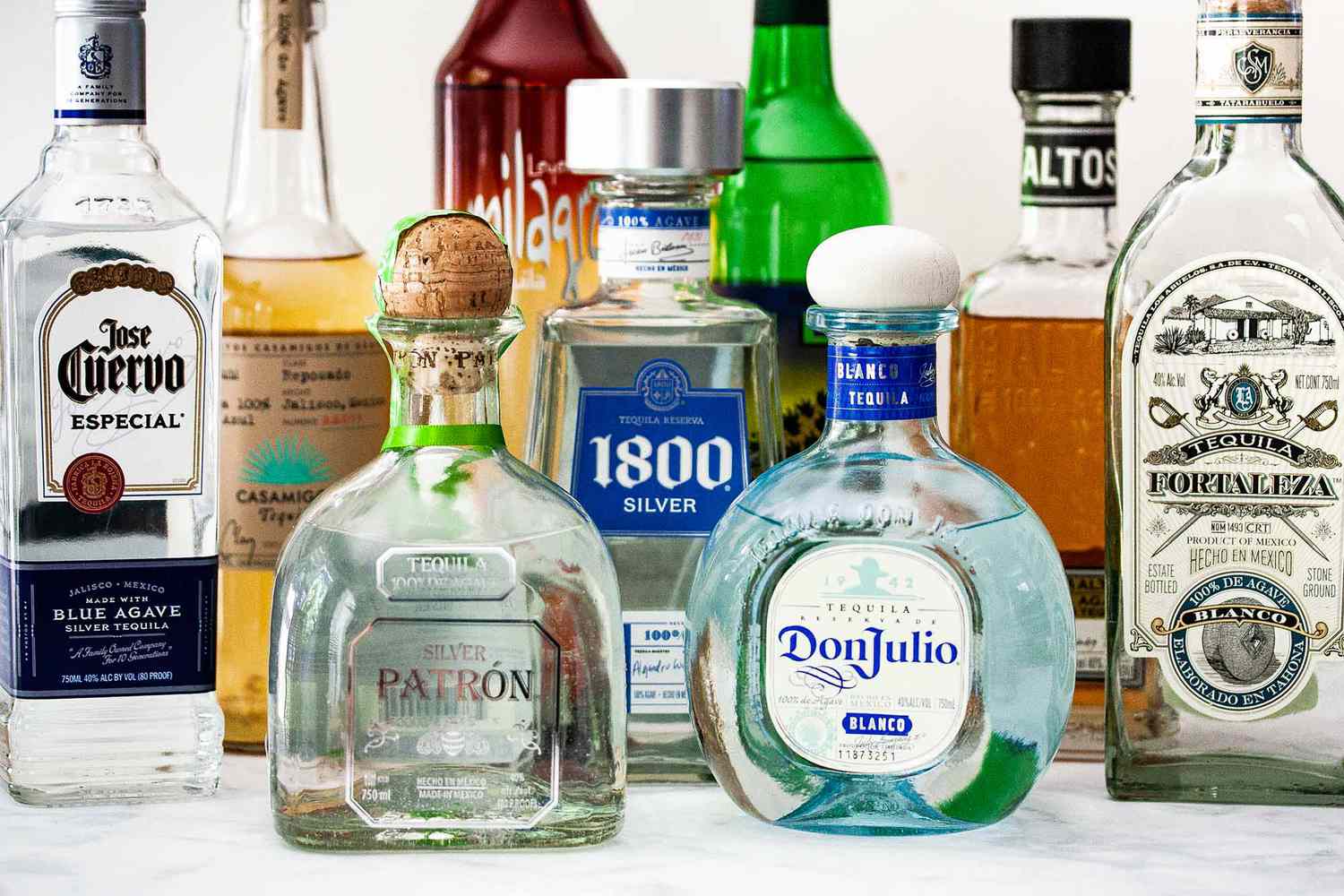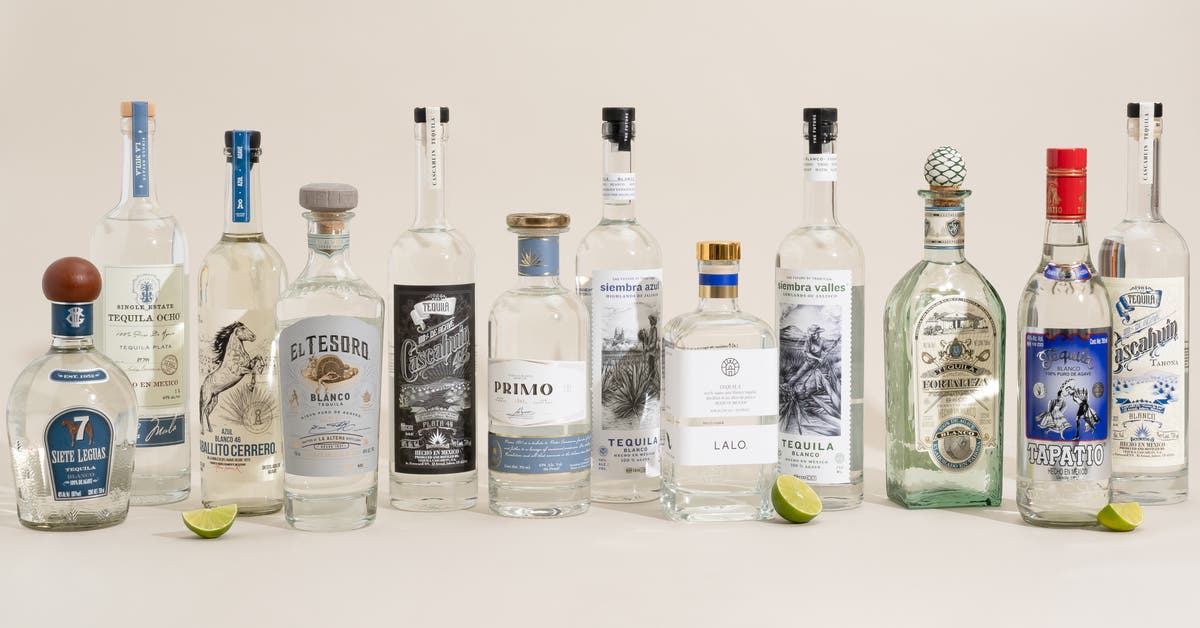
Introduction To Tequila
Brief History Of Tequila
Tequila, a beloved spirit with a rich history, originates from Jalisco, Mexico. The birth of tequila dates back to the 16th century when Spanish conquistadors introduced distillation techniques to the indigenous people. Over time, this distilled agave spirit evolved into what we now know as tequila.
The name “tequila” is protected by law and can only be used for spirits produced in specific regions in Mexico, primarily the state of Jalisco. These regions offer optimal conditions for growing the blue agave plant, the core ingredient in tequila production.
Tequila Production Process
The process of making tequila involves several crucial steps that contribute to the distinct flavors and characteristics of each type. Below is a comparison of the four main types of tequila – Blanco, Reposado, Añejo, and Extra Añejo:
| Tequila Type | Aging | Flavor Profile |
|---|---|---|
| Blanco | Unaged | Crisp, Agave-forward |
| Reposado | Aged 2-12 months | Mellow, Oak notes |
| Añejo | Aged 1-3 years | Complex, Rich |
| Extra Añejo | Aged over 3 years | Bold, Velvety |
Each type of tequila offers a unique taste experience, influenced by factors such as aging duration and barrel type. The production process includes harvesting the agave plant, cooking, fermentation, distillation, aging (for certain types), and bottling. By understanding these processes, enthusiasts can appreciate the nuances of different tequilas and explore the diversity of this versatile spirit.
Blanco Tequila
Characteristics Of Blanco Tequila
Blanco tequila, also known as silver or white tequila, is characterized by its crisp and agave-forward flavor profile. Being an unaged tequila, it retains the pure essence of the blue agave plant without any influence from oak barrels. This results in a fresh and vibrant spirit with a smooth finish, making it a popular choice for cocktails that highlight the agave’s natural sweetness. Blanco tequila is versatile, lending itself well to classic margaritas, palomas, and other mixed drinks where its bold agave flavors can shine through.
Popular Brands And Varieties
Some of the popular brands of blanco tequila include Patrón, Casa Noble, Don Julio, and Fortaleza, each offering its unique interpretation of this classic spirit. While some brands focus on traditional production methods that prioritize the purity of agave flavors, others experiment with innovative techniques to create distinct tasting notes. Whether you prefer a bold and peppery blanco tequila or a smooth and citrusy one, there is a wide range of options available to cater to every palate. Exploring different brands and varieties can help enthusiasts discover new favorites and appreciate the diversity within the world of blanco tequila.
Joven Tequila
What Is Joven Tequila?
Joven tequila is a unique blend of unaged Blanco tequila and aged tequila, akin to a blended scotch. This type of tequila is rarer and more complex than other varieties, offering a combination of fresh agave notes and the mellow richness of aged spirits. Joven tequila balances the vibrancy of young tequila with the depth of aged expressions, creating a harmonious flavor profile that appeals to both newcomers and seasoned enthusiasts.
Flavor Profiles And Pairing Recommendations
Joven tequila exhibits a dynamic range of flavors, from the bright grassy notes of Blanco tequila to the subtle oakiness of aged varieties. Its complexity makes it a versatile spirit for sipping neat or mixing into cocktails. Pairing Joven tequila with citrus-forward drinks like margaritas or spicy cocktails enhances its agave-forward character while complementing its smooth finish. For those looking to explore the diversity of tequila flavors, Joven tequila offers a delightful balance of tradition and innovation.
Reposado Tequila
Aging Process Of Reposado Tequila
Reposado tequila undergoes aging for up to one year, imparting a smoother and more complex flavor profile compared to unaged Blanco tequila. During this aging period, the tequila rests in oak barrels, allowing it to absorb the characteristics of the wood. This process mellows out the sharpness of the agave while adding notes of vanilla, lemongrass, and toasted oak to create a well-rounded spirit.
Tasting Notes And Serving Suggestions
Casa Noble Tequila Reposado offers aromas of vanilla, lemongrass, and floral notes that harmonize with flavors of sweet cooked agave and toasted oak. This balanced tequila can be savored neat to appreciate its complexity or used in cocktails for a unique twist. When serving Reposado tequila, consider pairing it with dishes that complement its flavors, such as grilled meats, seafood ceviche, or spicy Mexican cuisine. The versatility of Reposado tequila makes it an excellent choice for both casual sipping and creative mixology.
Añejo Tequila
Definition And Qualities Of Añejo Tequila
Añejo tequila is a type known for its rich flavors and smooth characteristics. It is aged in oak barrels for a significant period, allowing it to develop complex notes that set it apart from other tequila varieties. Añejo tequila is prized for its deep amber color and the depth of flavors it gains during the aging process.
Aging Techniques And Aging Duration
Añejo tequila is typically aged for a minimum period of one year, providing it with ample time to absorb the nuances of the oak barrels. During this aging process, the tequila mellows, creating a harmonious blend of flavors that often include hints of caramel, dried fruit, and spices. The longer aging duration of añejo tequila compared to reposado and blanco varieties allows for a more pronounced profile that appeals to connoisseurs and enthusiasts alike.

Extra Añejo Tequila
Ultra Aged Tequila Varieties
Extra Añejo tequila, also referred to as ultra-aged tequila, is a distinguished category known for its extended aging process in oak barrels. With a minimum aging requirement of three years, this type of tequila undergoes a prolonged maturation period that contributes to its exceptional depth and complexity.
Unique Flavor Profiles And Collectible Bottles
Extra Añejo tequila offers a unique tasting experience characterized by intense flavors and aromas developed over years of aging. These ultra-aged tequilas often showcase notes of vanilla, oak, dark chocolate, and spices, delivering a luxurious sipping experience. Due to the meticulous aging process, extra añejo tequilas are highly sought after by collectors and aficionados looking for exceptional quality and rare bottles to add to their collection.
Tequila Cocktails
Classic Tequila Cocktail Recipes
Extra Añejo Tequila: An ultra-aged tequila variety, extra añejo tequila is renowned for its extended aging process in oak barrels. With a minimum aging requirement of three years, this tequila type acquires exceptional depth and complexity.
Mixology Tips For Tequila-based Drinks
Extra añejo tequila presents a unique tasting experience with intense flavors and aromas that develop over years of maturation. Featuring notes of vanilla, oak, dark chocolate, and spices, these ultra-aged tequilas provide a luxurious sipping experience. Collectors and tequila enthusiasts seek out these rare bottles for their outstanding quality and exceptional aging process.
Tequila Tasting Tips
How To Properly Taste Tequila
When exploring tequila tasting, one must approach it with the same respect and appreciation as one would a fine wine or whiskey. To properly taste tequila, follow these steps:
| Step | Description |
|---|---|
| 1. Appearance | Observe the color and clarity of the tequila. Notice any legs or tears on the glass, indicating viscosity. |
| 2. Nose | Inhale deeply to identify the aromas. Note any scents of agave, fruits, herbs, or spices. |
| 3. Taste | Sip the tequila slowly. Explore the flavors on your palate. Look for sweetness, earthiness, or spiciness. |
| 4. Finish | Examine the aftertaste. Assess the length and any lingering flavors. |
Hosting A Tequila Tasting Party
When hosting a tequila tasting party, the goal is to create an atmosphere that enhances the experience for your guests. Key tips for hosting a successful party include:
| Element | Description |
|---|---|
| Introduction | Begin by introducing the selection of tequilas to set the tone for the evening. |
| Observation | Encourage guests to observe the color, aroma, and taste of each tequila. |
| Education | Educate your guests on the different types of tequila and how they are produced. |
| Tasting Notes | Provide tasting notes or a tasting sheet for guests to record their impressions. |
| Food Pairings | Offer food pairings that complement the tequilas being tasted to enhance the flavors. |
These tips will help elevate your tequila-tasting party and ensure that your guests have a memorable and enjoyable experience.
Conclusion
Summary Of Different Tequila Types
When it comes to tasting tequila, it’s essential to approach it with respect and attention to detail, similar to evaluating fine wines or whiskies. To properly taste tequila, follow the steps of observing its appearance, noting its aromas, exploring its flavors, and assessing the finish. Hosting a tequila tasting party involves introducing the tequilas, encouraging guests to observe and taste, educating them on the types and production processes, providing tasting notes, and offering food pairings to elevate the experience.
Final Thoughts And Recommendations For Tequila Enthusiasts
For those delving into the vibrant world of tequila, understanding the nuances and distinctions among Blanco, Reposado, Añejo, and Extra Añejo varieties can greatly enhance the drinking experience. By exploring the meaning, history, and nuances of diverse tequila types, enthusiasts can deepen their appreciation for this beloved spirit. Whether enjoying tequila in solitude or hosting a tasting party, paying attention to the intricate details can make the experience more enriching and enjoyable. Cheers to discovering the complexities and flavors of tequila!
FAQ About Types Of Tequila: A Comprehensive Guide To Tequila Varieties
Q: What is the difference between blanco, reposado, and añejo tequila?
A: Blanco tequila is unaged, reposado is aged for at least two months but less than a year, and añejo is aged for at least one year but less than three years.
Q: Are all tequilas made from the same type of agave plant?
A: No, while all tequilas must be made from the blue agave plant, there are over 200 different species of agave plants that can be used to make tequila.
Q: What is the best way to drink tequila?
A: The best way to drink tequila is to sip it slowly and enjoy the flavors. Some prefer it neat, while others enjoy it in cocktails like margaritas or palomas.
Q: What are the geographical designations for tequila production?
A: Tequila can only be produced in a specific region in Mexico known as the Tequila region, which includes parts of five states: Jalisco, Guanajuato, Michoacán, Nayarit, and Tamaulipas.
Q: Can tequila age in the bottle like wine?
A: Tequila does not age in the bottle like wine. Once it is bottled, it will not change its flavor profile over time. It is the aging process in barrels that affects the taste of tequila.
Q: Are there any health benefits associated with drinking tequila?
A: When consumed in moderation, tequila made from 100% agave may have some health benefits, such as aiding digestion and potentially lowering blood sugar levels due to agavins, natural sugars in agave plants. Always drink responsibly.
